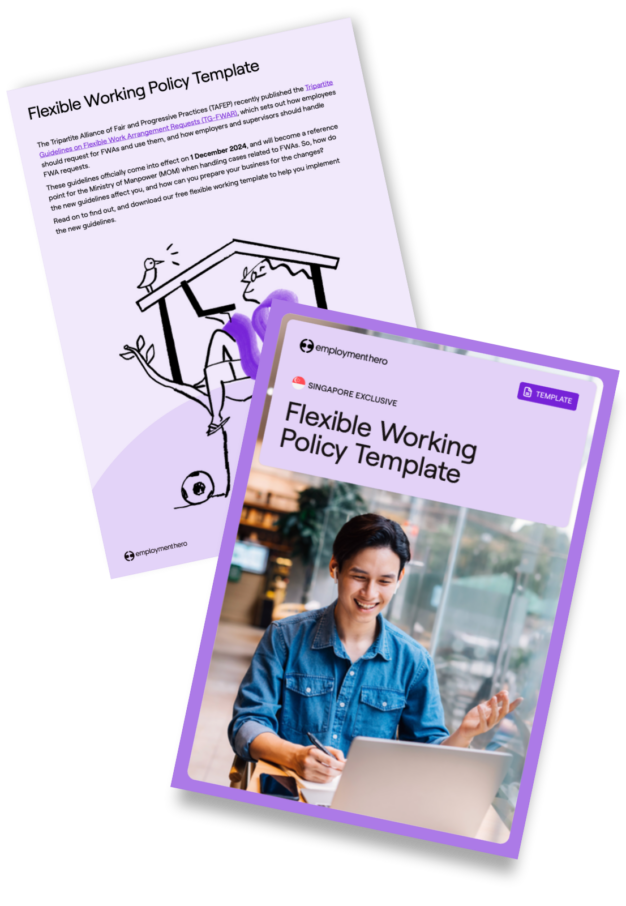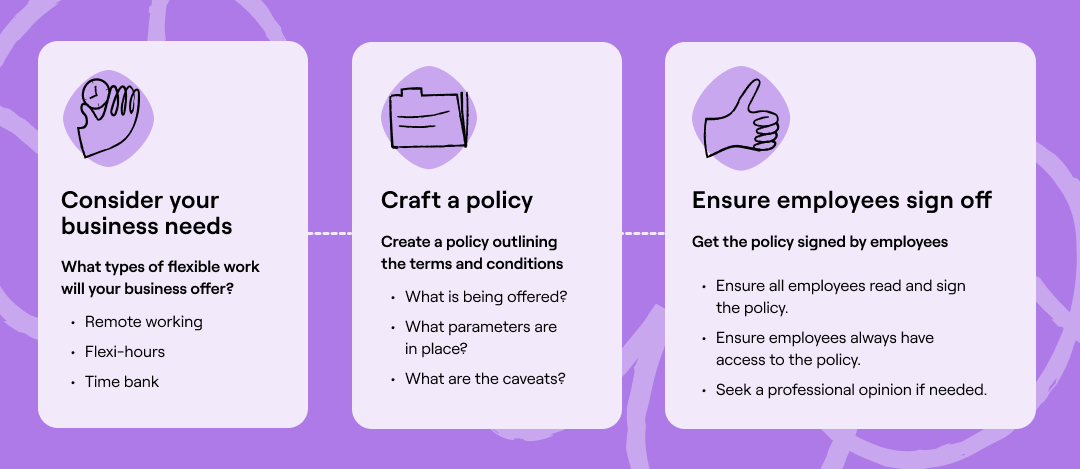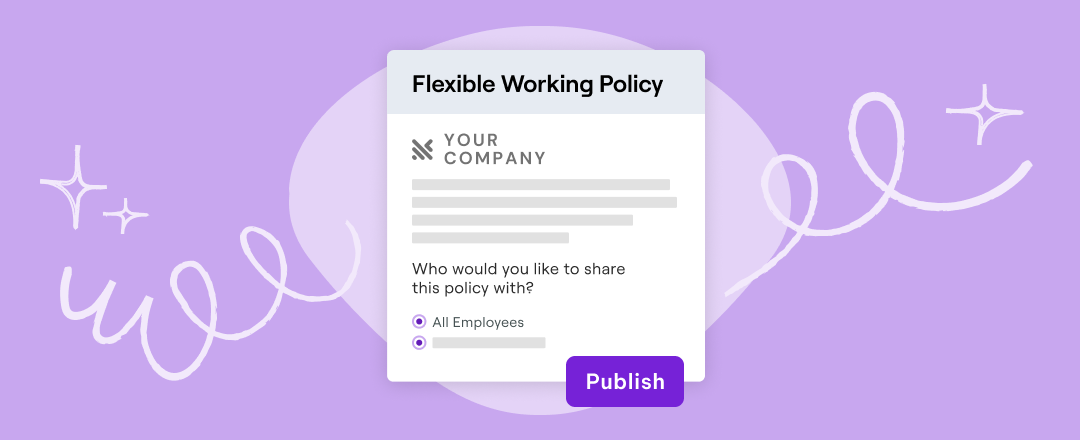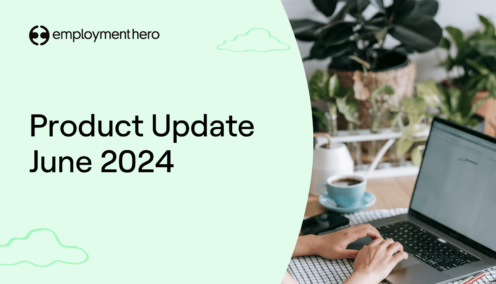The Tripartite Alliance of Fair and Progressive Practices (TAFEP) recently published the Tripartite Guidelines on Flexible Work Arrangement Requests (TG-FWAR), which sets out how employees should request for FWAs and use them, and how employers and supervisors should handle FWA requests.
These guidelines officially come into effect on 1 December 2024, and will become a reference point for the Ministry of Manpower (MOM) when handling cases related to FWAs. So, how do the new guidelines affect you, and how can you prepare your business for the changes?
Read on to find out, and download our free flexible working template to help you implement the new guidelines.
Why is it important to have a flexible working policy?
The reality is, the pandemic changed our perceptions of the way we work — employees have shown that they can work remotely for the long term. And, they have clear expectations — our Remote Work Report showed that the majority of knowledge workers (88%) would like to work remotely for at least one day a week, and if an employer were to insist on a full time return to the office, it could be a deal breaker for some employees.
But it’s not just about employee expectations. There are also significant business benefits that come with this working model. A recent study by Gartner revealed that 43% of people believe that flexible working helped them achieve higher levels of productivity, and 30% said that spending no time commuting increased their productivity.
Employers who embrace flexible working can better attract and retain talent, as well as tap into a larger talent pool, while employees can enjoy a better work-life balance which benefits their mental well-being. It’s a win-win situation.
While many might think of flexible work arrangements as just working from home, there are actually many other forms of arrangements. They include flexible working hours, staggered hours, hybrid working arrangements or even a flexible workload based on the needs of the company and employee.
As an employer, do you embrace and encourage flexible working in your organisation? If so, it’s incredibly important to have a clear and transparent policy in place to set the rules. This policy can help your team learn more about flexible working, whilst setting ground rules for them to follow.
How can you use this flexible working template?
We’ve created a free, flexible working policy template in line with TAFEP’s newly released FWA guidelines for you to introduce to your business.
Just download the PDF and personalise the document for your company using the editable fields. Then, get your employees to acknowledge the policy. It’s that easy!
Download the template now.
Disclaimer: The information in this template is current as at 15th May 2024, and has been prepared by Employment Hero Pty Ltd (ABN 11 160 047 709) and its related bodies corporate (Employment Hero). The views expressed in this template are general information only, are provided in good faith to assist employers and their employees, and should not be relied on as professional advice. The Information is based on data supplied by third parties. While such data is believed to be accurate, it has not been independently verified and no warranties are given that it is complete, accurate, up to date or fit for the purpose for which it is required. Employment Hero does not accept responsibility for any inaccuracy in such data and is not liable for any loss or damages arising either directly or indirectly as a result of reliance on, use of or inability to use any information provided in this template. You should undertake your own research and seek professional advice before making any decisions or relying on the information in this template.

What are flexible working arrangements?
Flexible work arrangements allow employees to have some control over their working hours and where they get work done.
They usually fall into one or more of these three categories:
- Flexi-place: Employees work flexibly from different locations aside from their usual office location (e.g. telecommuting, work-from-home)
- Flexi-time: Employees work flexibly at different timings with no changes to total work hours and workload (e.g. flexi-hours, staggered hours, flexi-shift, compressed work schedule)
- Flexi-load: Employees work flexibly with different workloads and with commensurate remuneration (e.g. job sharing, part-time work)
Should you offer flexible working arrangements?
One thing that fills employers with varying degrees of trepidation is implementing flexible working policies. How do you do it? And where do you start?
When it comes to implementing flexible work arrangements, the first thing you want to think about is what works for your business. Think about the types of flexible arrangements available and what might suit you.
If you’re a tech company like Employment Hero, remote working is a very viable option.
If you’re a business that needs people on the ground, rather than throwing your hands up in defeat, consider what you can offer.
Once you’ve thought about what works for your business, it’s time to craft a policy!
Read more: Insights for employers on how to navigate remote work
Creating your own flexible working arrangement policy
Having an official policy is super important when it comes to implementing changes. They help manage risk from approving an employee’s flexible working request and can be used as evidence in unfair dismissal cases.
When crafting a flexible working policy, clearly outline what the terms are, what caveats there are and any deal breakers.
Here are some example questions employers should consider:
- What will be the working hours and finish times for team members?
- Will employee productivity be affected?
- Can employees fulfil their responsibilities while flexible working?
- Do you have a work-from-home policy in place?
- Do your employees have access to adequate remote working tools?
Once you’ve crafted your policy, it’s time to implement it at your workplace.
Read more: How do you build trust while remote working?
How to implement a flexible working policy

The first step is to get employees to read the flexible working policy and acknowledge the terms and conditions. This can easily be achieved by getting employees to sign off on policies.
By signing off on a policy, an employee acknowledges they have read and understood what the business expects of them.
Make policy acknowledgements easy and seamless with Employment Hero

Did you know that with Employment Hero’s HR software, you can easily assign policies like this to employees, and get them to acknowledge them digitally? It’s fuss-free and convenient — plus it’s permanently stored in the platform, so they can refer back to it and access it anytime, anywhere!
If you aren’t using Employment Hero yet, just reach out to us and we’ll show you what we can do for your business.
Download our flexible working policy template.




